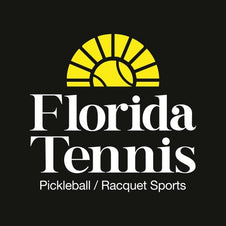Crushing the Breaker: An Effective Guide by John W. Sherwood
Jul 02, 2025
Whether you're playing a 12-point set tiebreaker or a 10-point super tiebreaker, there are several key strategies to improve your success rate. By following these simple yet effective tactics, you'll find yourself coming out on top in a higher percentage of the breakers you play.
Mental Approach
The foundation of all tiebreak success is mental toughness. Ask yourself: Who’s winning when the set score is 6-6? Or Who’s ahead after splitting two tight sets? If your answer is “it’s tied” or “a set each,” you’re missing the point.
You must approach every breaker as if you are winning—as if you’re in control. You should believe you are better prepared for the moment than your opponent and embrace the challenge. Play to win—don’t play "not to lose." There’s a massive mental difference between the two. Any mindset less than fully positive gives your opponent the edge.
Play Aggressively—Not Foolishly
Since the match is close, you’ll need to take some calculated risks while sticking to your core game plan. That doesn't mean changing what’s worked for you so far. It means seizing the opportunity to pressure your opponent or finish points when presented. Stay focused, commit to your routines, and raise your intensity. Know exactly where you are in the score, and enter each point with a clear purpose. Visualize the positive.

Photo courtesy of Saviano High Performance Tennis.
Stay in the Present
Don’t focus on the final outcome. Focus on executing each point. If your opponent hits a great shot or gets lucky with a net cord—let it go. You can’t change the past. Your energy belongs to the point you’re about to play. Nothing else.
First Serves
In tiebreakers, getting a high percentage of first serves in is critical. Ideally, you should make nearly every first serve. Take your time. Stay loose. Breathe. Stick to your pre-serve routine. Have a clear plan for serve placement—by now, you should know your opponent’s return weaknesses. Target them, and play the percentages.
Second Serves
Hit it with confidence! Many players tighten up, slow the racquet head, or forget their leg drive—trying to avoid the double fault. Instead, stay loose, breathe, and hit a solid second serve. Believe in your serve—and in yourself.
First Serve Returns
Every return must go in. Normally, your goal on first serve returns is to enter the point in a neutral or better position. In a breaker, I don’t care how clean or ugly it looks—just get the return in play. Force your opponent to hit one more ball. Aim deep middle or slightly crosscourt.
Second Serve Returns
This is your chance to apply pressure. Step in a little. Make the server think about it—without overdoing it. Look to play first-strike tennis with an aggressive return down the line or by creating an angle. Make your opponent move. Your goal is to take control of the point from the return.

Photo courtesy of Saviano High Performance Tennis.
Take the Lead Early
Momentum matters. Every point in a breaker counts. If you can grab an early lead, you can apply more pressure through aggressive play—returns, approaches, angles—giving you a path to close the match with confidence.
But if your opponent gets ahead, don’t panic. Shift momentum by winning three or more points in a row. Make your opponent start doubting themselves. Force them into a more conservative game—and that opens the door for your comeback.
Practice Breakers
Practice both standard and modified formats. Run tiebreaks starting from even scores, from ahead, and from behind (like 1–4). Learn to close out leads and mount comebacks. Replicate the mental pressure so that nothing feels unfamiliar on match day.
Heart and Guts
When it comes down to it, breakers often hinge on five simple questions:
-
Who really wants to win?
-
Who hates to lose?
-
Who runs for every ball?
-
Who believes in themselves?
-
Who plays to win?
The player who answers yes to all five usually walks away with the win.
In Summary
You won’t remember every detail in the heat of a match. So just focus on these core principles:
-
Let go of the outcome—focus on execution
-
Believe in yourself—play to win
-
First serve in
-
Every return in
-
Minimize unforced errors
-
And one more time: Play to win
-
Show your heart and guts
===
About the Author

Above: John W. Sherwood, Director of Saviano High Performance Tennis.
John W. Sherwood is a USPTA Elite Professional and USTA High Performance Coaching Graduate, and one of the most recognized high-performance coaches in the United States.
A former Division I tennis player at the University of Toledo, John began his professional journey in business—running national sales organizations and managing small business turnarounds. He later became Chief Club Operating Officer of Five Seasons Sports Clubs in Cleveland, Ohio and Burr Ridge, Illinois.
John has coached at the USTA National Tennis Center in Flushing, NY, served as Director of High Performance Tennis at Centercourt Athletic Club in Chatham, NJ, and coached three USTA Spring National Team Championship squads.
He spent over four years on staff with the Boston College Women’s Tennis Team, helping coach five nationally ranked players at the ITA All-Americans and leading the Eagles to the highest national ranking in school history.
Currently, John is the Director of Saviano High Performance Tennis. He has published articles in national and international outlets including Tennis Recruiting, TennisPlayer.net, NY Tennis Magazine, and USPTA publications.
He has guided hundreds of junior players through the developmental pathway to top Division I college teams and the professional tour. While grounded in strong fundamentals, John's coaching excels in sharpening the mental, strategic, and problem-solving skills that distinguish elite competitors.
Top photo credit: ATP Tour.

